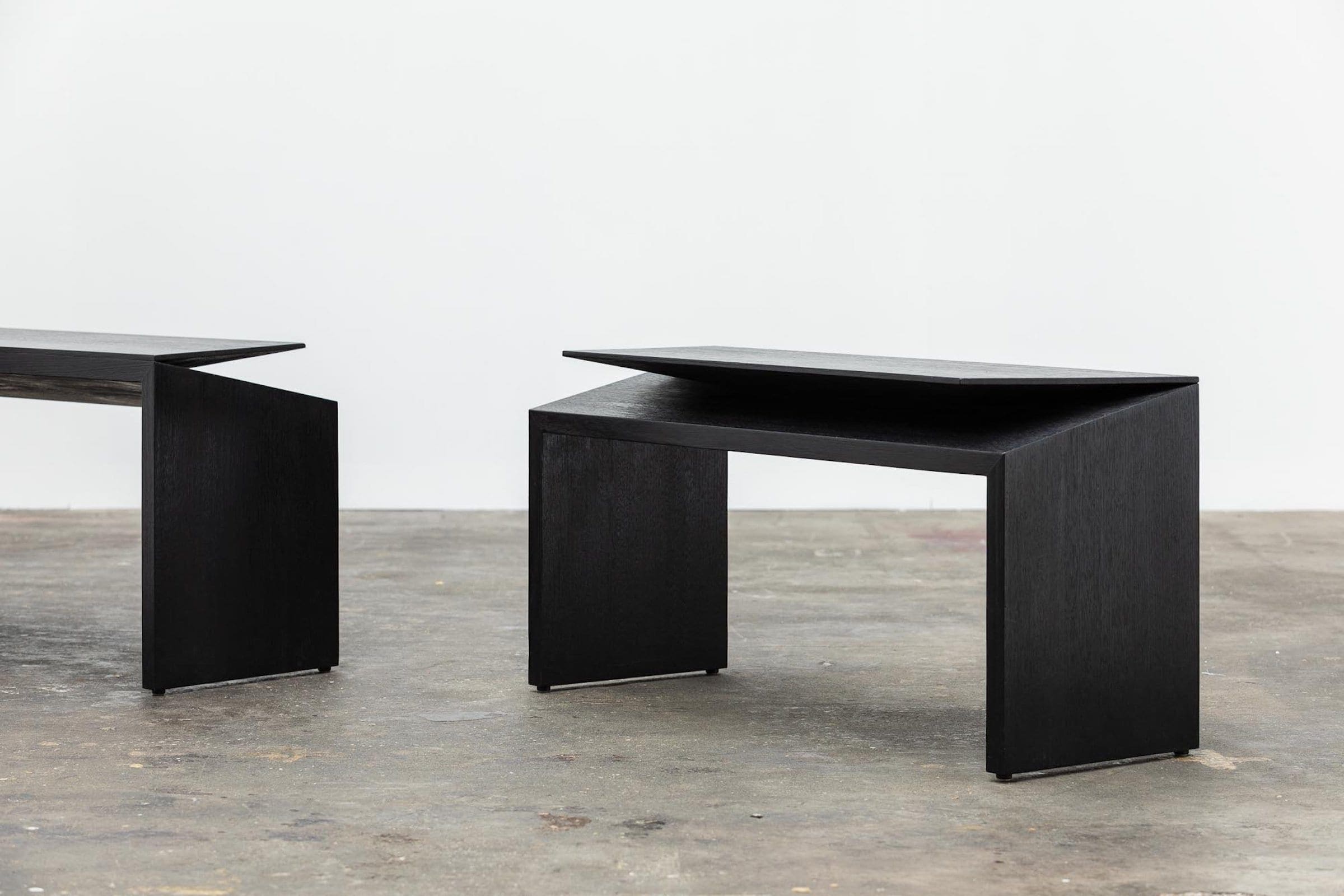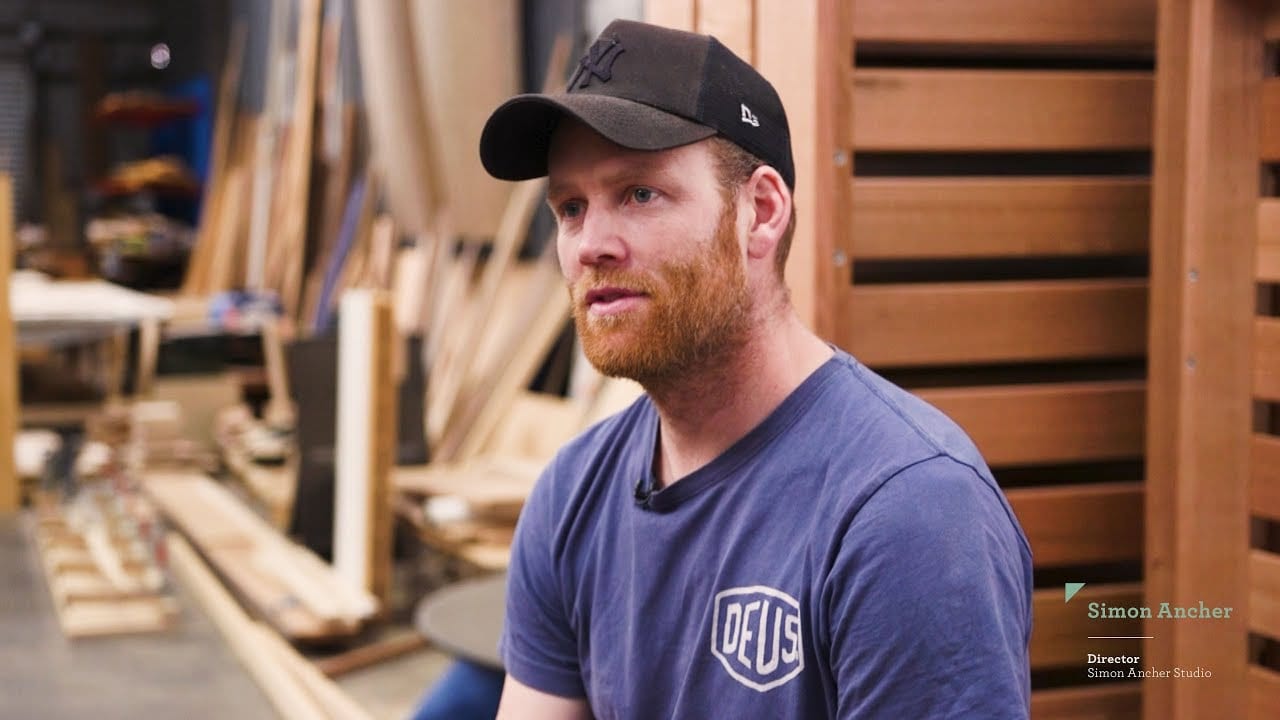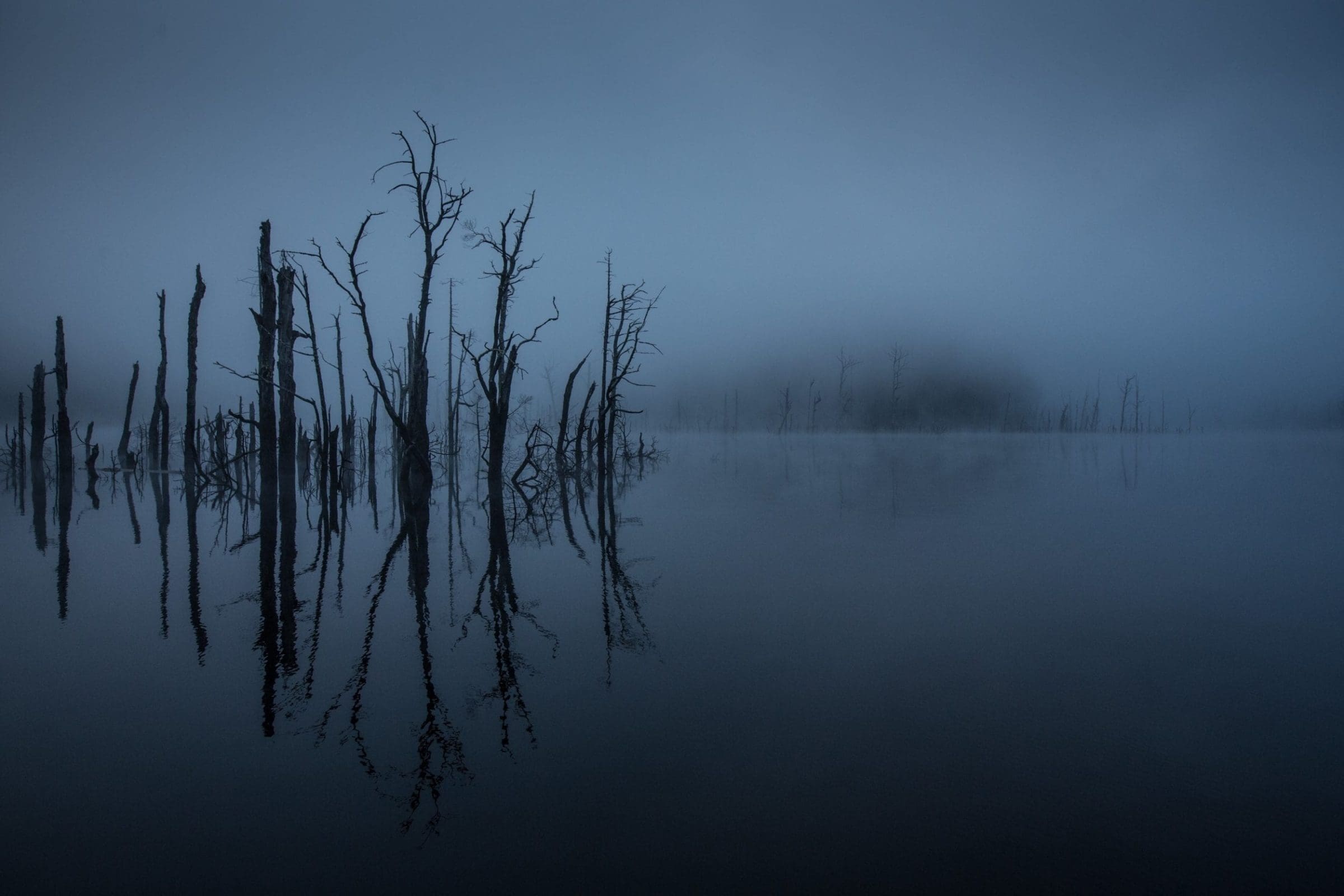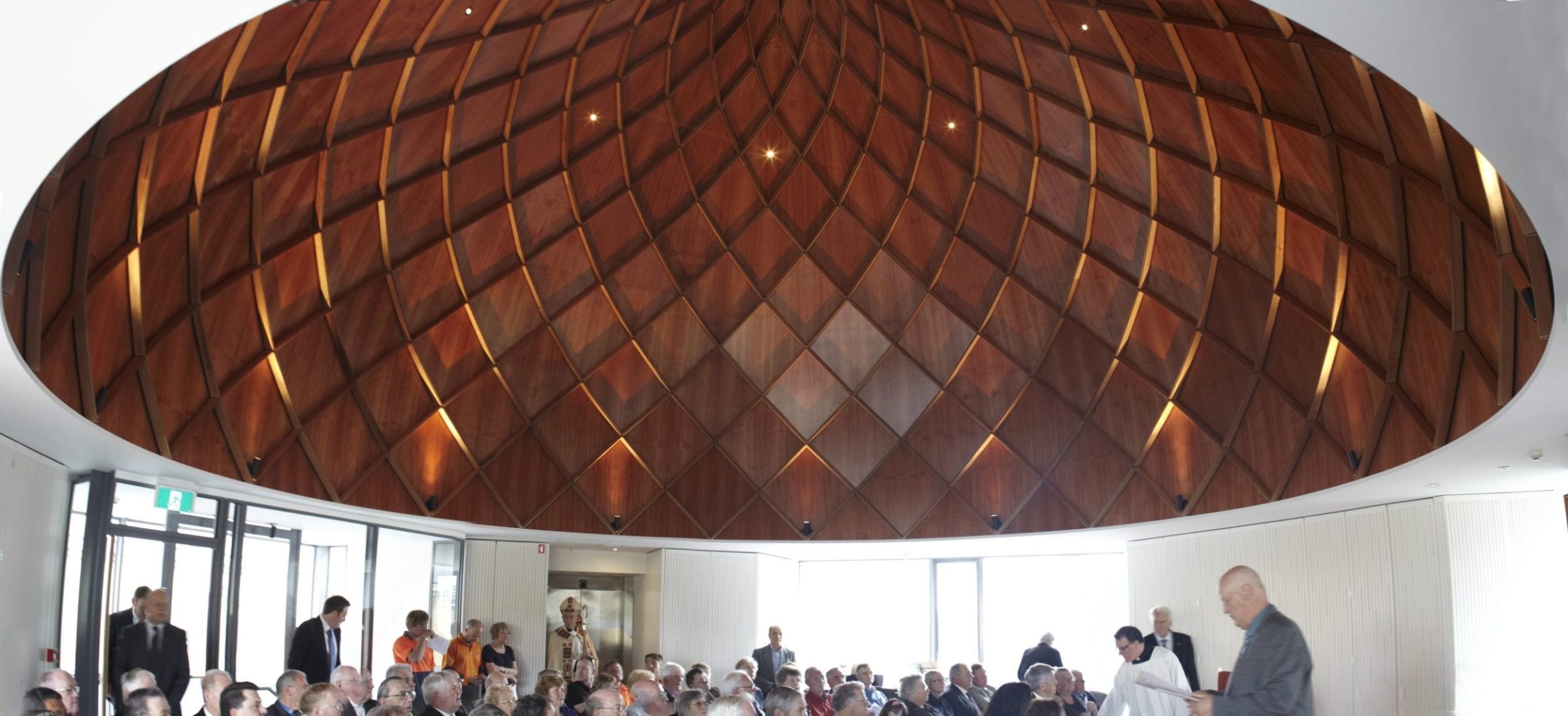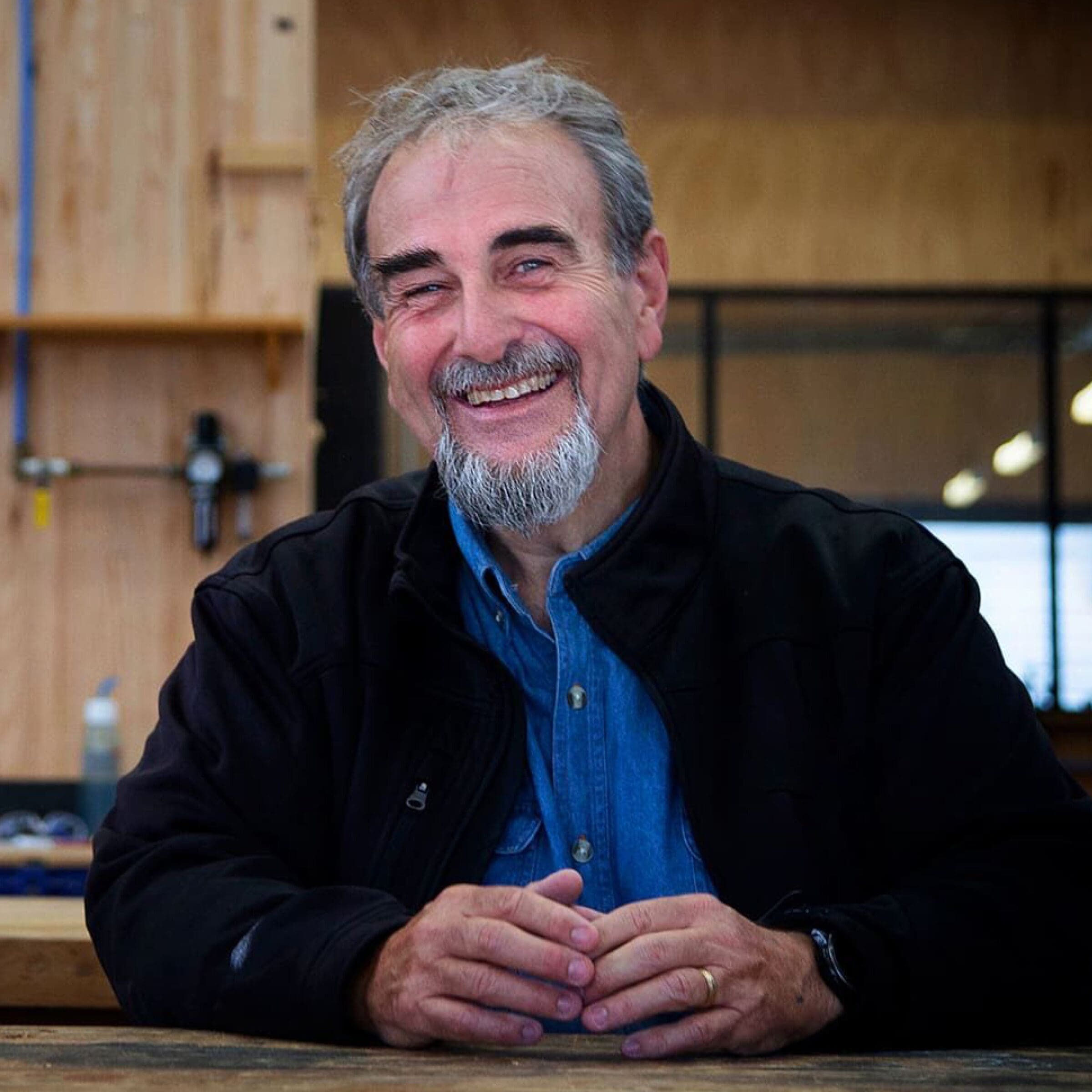Simon Ancher on sustainability, non-standard public seating and pushing the limits
“I think often we look at sustainability in a simplistic way. For me, it’s about designing objects that have a long life. I design things based on their situation and best fit for that scenario rather than chasing a trend or style where the object might be out of vogue in 12 months’ time. I’m very anti the throwaway society.
“I’m very anti the throwaway society. Designed properly, an object will last.”
“Things made of timber, like old chairs, that wear over time where hands have constantly touched them, have a real story behind them. It’s what spurs me on to maintain a highly designed approach with a view that designed properly, an object will last.”
Simon works across material palettes, including steel, marble and Tasmanian timber species. He loves the sustainability aspect of timber.
“Timber is a fantastic resource in that regard. I’m an outdoors person and I love the beauty of standing trees. As a material, the fact that it is a growing resource is great. There is a sustainability aspect to it and the provenance of a wonderful history with a chain of custody that tells that story through to the end piece of furniture.
“It’s a fascinating part of working with timber because you can see it from standing in the ground to the finished product and track that process.”
Simon says that as a maker, you almost develop a bit of a relationship with the specific piece of timber you’re working with.
“You carefully select it and then work with it and its intricacies, because it’s not a static piece of material.
“It still moves and behaves differently through the seasons, so it’s essentially living or acting and responding to its situation and environment. I think that’s really interesting.”
Perhaps this ‘life’ within the material is why it brings such warmth and character to a space.
Simon’s craft
Part of Simon’s process has been to look at how he can present Tasmanian Oak in a different light. A signature of his furniture is a charred, satin black finish to Tasmanian Oak. A process that he says, has some witchcraft involved.
“I’ve played with burning and blowtorching and then rubbing it back. It creates different textures and brings out characteristics which exist in the timber but aren’t necessarily obvious.
“I’ve developed a way, over many years, that gets just the right effect. And it’s not a treatment that’s going to wear off. In fact, it’s very hard-wearing because it becomes heat treated. The longer it is in situ, the more beautiful the patina.”
Public Seating
Creating non-standard public furniture is something Simon is sought after for and enjoys.
“I like to offer sculptural seating that performs and does everything required of it in a seating sense, but then adds more by engaging the mind and senses. The tactility of timber helps deliver that.”
Simon uses concrete and steel to provide the grounding and a solid base, then timber for the parts of the seating that people come in contact with.
“If you had a choice you would always sit on a timber bench rather than a concrete one.
“I’ve used Celery Top Pine for a lot of my outdoor ventures. Its natural qualities and attributes mean that it is wonderful just left with a bit of oil to naturally grey. It deals with the weather beautifully.”
Techniques for the future
Simon loves to experiment, for example with old techniques that may have been lost and need to be re-discovered.
“If I stuck with the one thing or one methodology, life would get pretty boring.
“I’m really excited about pushing the limits. Learning about ways to use the machines I’ve got in better and more innovative ways to really maximise outputs.”
Simon is exploring boat-building techniques to create compound curved structures that are lightweight, and veneers of varying thicknesses cut from old and new timber to create durable surfaces with reduced movement issues.
“If the veneer is cut too thick it’ll move like a solid timber table, but if you get the thickness just right it behaves quite differently in a construction sense with negligible movement
“It’s really quite amazing what you can do with timber.”


